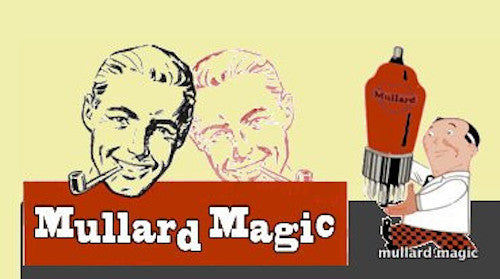
MORE ON VALVE VIBRATION!
Share
Well, today, I had an e-mail from an 'expert' on valve vibration. He attempted to 'correct' my last blog entry but rather than telling him to buzz off, I thought I would clarify matters a little further in my own 'non expert' way
My last blog entry dealt with an example of swept frequency sinusoidal microphonic testing where the gross effects of vibration on valve performance was being assessed at typical conditions potentially found in an accelerating aerial shell.
There existed a number of direct excitiation methods of measuring the affect of vibration on valves and for completeness, I will describe just one which is a typical system for examining specific effects on electrode structure - and hence electronic performance - this one was used by Mullard Research Laboratories for both initial design, competitor analysis and complaints analysis. Here below, we see a wonderful photo of this paragon of instrumentation:-


Perhaps a block diagram used in conjunction with the following text will help to describe how this contraption worked:-


As the frequency of the vibrator is varied, the microphonic output voltage of the valve will vary. If the vibrator excitation frequency is lower than the resonant frequency of the system, the deflection will be in phase, conversely, if the vibrator excitation frequency is higher than the resonant frequency, the deflection and force are 180° out of phase. The transition between these two states takes place in a narrow frequency band near the resonant frequency, at which a 90° phase shift between the deflection and the vibrator excitation force will exist. These changes of phase are visible on the oscilloscope as an oscillogram displaying Lissajous figures.
At the resonant frequency of a component, both the amplitude of the vibration of that component and the microphonic output voltage will be a maximum, accordingly, by varying the frequency of the vibrator until the microphonic voltage shows a maximum, and by observing the oscillogram in conjunction with viewing the valve through the microscope, it is possible to determine which component(s) within the valve envelope are responsible for any microphonic effect. As the vibrator and stroboscopic signal generators ar set to operate with a frequency differential of 10 Hz, any vibration of a component can be visualised as a slowly 'moving and blurring' artefact.
